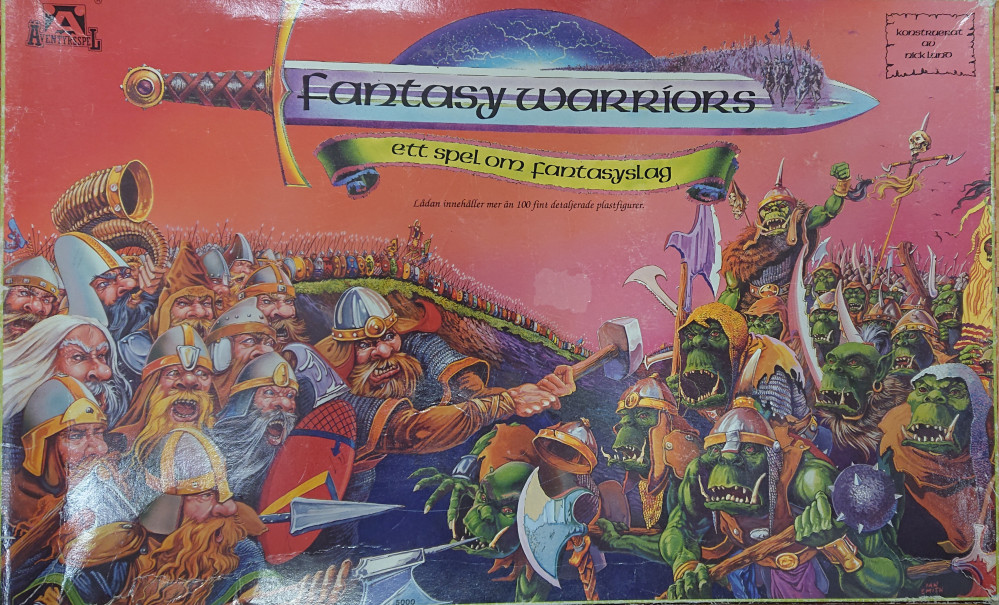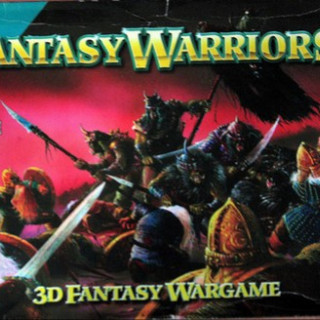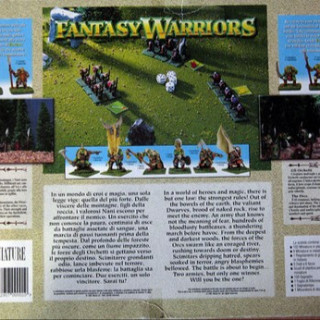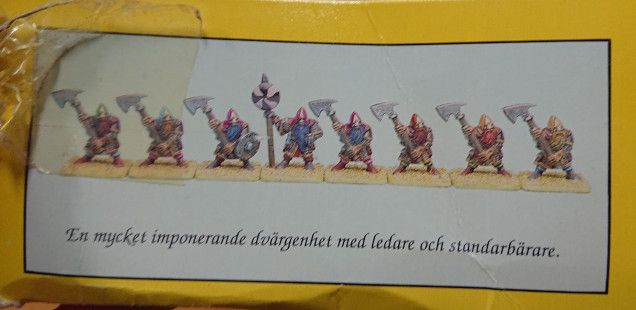
Armies of Fantasy Warriors
Fantasy Warriors - The Game, Part 2
In 1996, when Grenadier Models closed down, Stratelibri the company’s italian distributor bought the U.S. molds and master sculpts. Fantasy Warriors was then re-released in a 2nd printing of the game with a new box that has a different box art, and the underline “3D Fantasy Wargame”. The 2nd printing was released by Stratelibri’s game arm Nemo Miniatures in at least an english and an italian language version. During the late 1990s Nemo Miniatures started to develop a setting called The World of Valdar, which came to a premature end when the owner of the parent company Stratelibri suddenly passed away. The 2nd printing of Fantasy Warriors would, so far, be the last printing of the game. Although the rules are still available in italian from Mirliton S.G. that bought the molds and italian rulebook in 2004.
The english version of the rules are available from EM4 miniatures, owned by Doug Cowie one of the game’s co-creators, as a free download. EM4 also has the one published (there is an unpublished one too) expansion for the game, the Fantasy Warriors Companion, also by Nick Lund. The Fantasy Warriors rulebook has army lists for Barbarians, Dwarves, Goblins, Men, Orcs, Wood Elves and Trolls and Ogres. Except for the Trolls and Ogres, the army lists contain different fantasy warrior troops, specialists, warchiefs and individuals that can be organised into proper fantasy armies. The Trolls and Ogres are separate unit entries and “are used by many armies”, without being limited to any specific type of fantasy army. The six fantasy armies are outlined according to the available range of Grenadier miniatures, which means that they have exotic units such as Dwarven Ursine cavalry, Hobgoblin infantry and Wood Elf Eagle Riders. The range of exotic units would be expanded as more Fantasy Warriors miniatures were released. The Fantasy Warriors Companion also includes army lists for Undead, Amazons, Mercenaries and High Elves. Furthermore, the Warrior Newsletter dedicated to Fantasy Warriors published army lists for Dark Elves and Ratmen. There is also a rules update, by the games author Nick Lund, with a Halfling army list. So all in all, Fantasy Warriors covers a wide range of different classical fantasy armies, that just like some of the interesting game mechanics have started to come back into fantasy miniature games of our era.
Researching Fantasy Warriors, I have discovered a game that surprises. Nick Lund introduced novel game mechanics. Grenadier Models introduced the concept of the two player starter box with miniatures and the translation of rules to markets outside of the english speaking world. I have to wonder how much Games Workshop’s development of 4th edition Warhammer Fantasy Battles was a reaction to Fantasy Warriors and how much it was an internal company progression. 4th ed WHFB contained 104 miniatures, just above the 102 miniatures of Fantasy Warriors, coincidence or strategy? Why were the High Elves and Goblins in 4th ed WHFB, was the reasoning that Orcs and Dwarves were “taken” or “if we do High Elves and Goblins then all the classic fantasy races will be available in plastic” or didn’t Grenadier’s models matter at all? Similarly, Battle Masters contained 105 miniatures, including cavalry, an ogre and a Empire cannon and crew. Plastic miniatures were not new to GW at the time, but as far as I can tell the concept of a two player started box was.
Fantasy Warriors also covers the “classical” fantasy armies, but with some more distinctive units, like large cat riding Amazons, Dwarves flying on bats and Dark Elfs on condors. What it does lack is a specific game setting, with a thoroughly described world and a timeline of major events. Although, the Warrior Newsletter does contain small tidbits of game setting narratives these mostly revolve around the specific scenario. Fantasy Warriors leaves the world setting and narrative up to the player, while still retaining some narrative encouragement in the general scenario design. The absence of different scenarios is also a distinctive feature of the rules, if compared to other games, especially games released after Fantasy Warriors.
Having just scratched the surface of Fantasy Warriors, I realize that I’ll have to come back to writing in more detail about the rules and game mechanics, the range of miniatures and their style, the game supplements, the Warrior Newsletter and the Fantasy Warriors world setting. Since I didn’t even own the game in the early 1990s I have no idea of how popular or unpopular it really was. I’m curious if it had a large base of gamers and hobbyists. Was it ever a contender to become a market leader? Did the almost lack of world setting affect the games popularity? Was it a true front-runner for fantasy miniature wargames or are my conclusions off the mark? Will I eventually get to play a battle with the game?































![How To Paint Moonstone’s Nanny | Goblin King Games [7 Days Early Access]](https://images.beastsofwar.com/2024/12/3CU-Gobin-King-Games-Moonstone-Shades-Nanny-coverimage-225-127.jpg)











































Played a few games way back when after buying it in a FLGS – I remember it as a solid game, if I would now bark against the idea of the amounts of tokens it used on the tables
Nice to hear. So far my only other source for that is Grenadier’s own newsletter, and the sent in letters section. In there the argument seem to be that the rules very more solid than WHFB 3rd edition. But, those are some very biased sources.
Sorry I don’t recall any more it been 20+ years and a lot of games since then